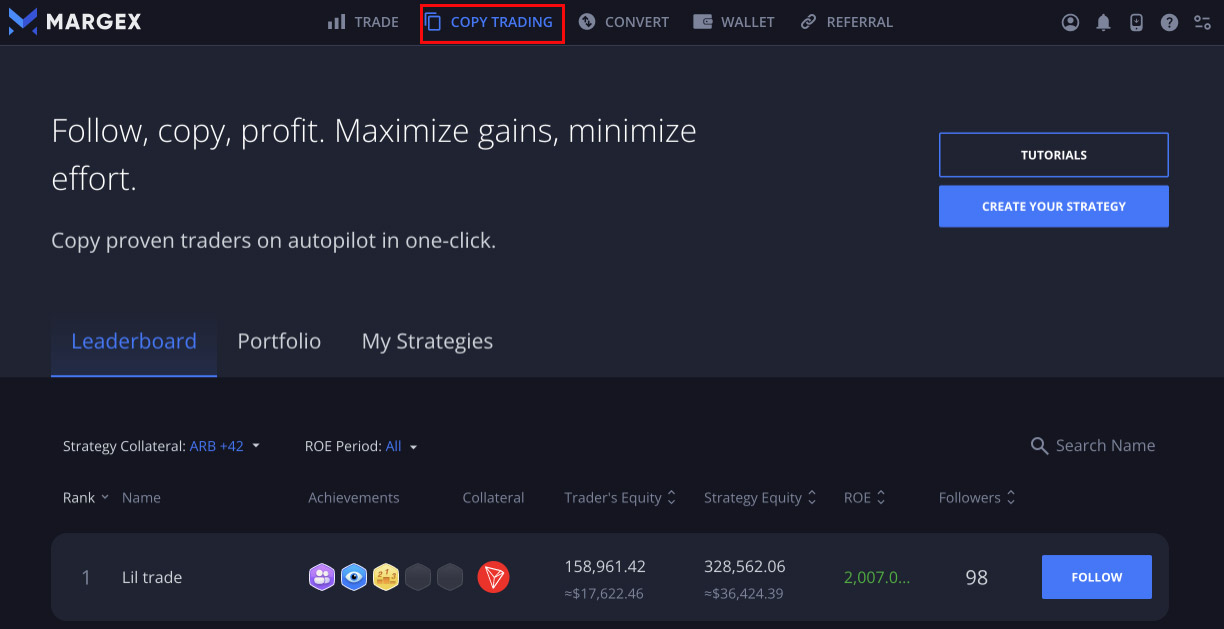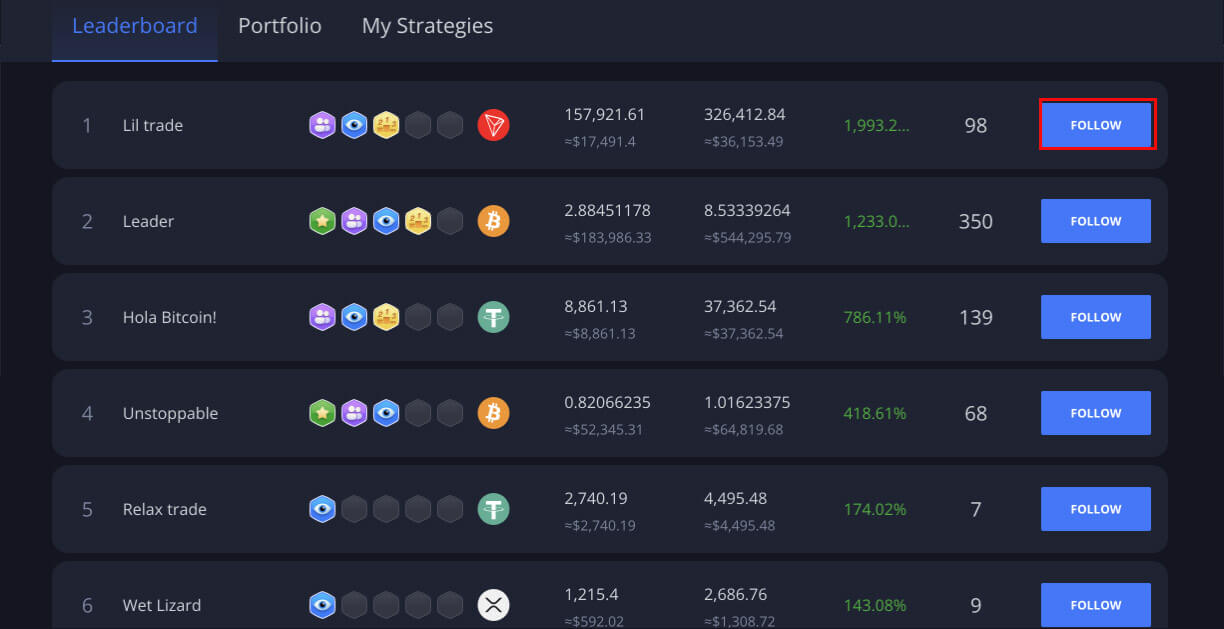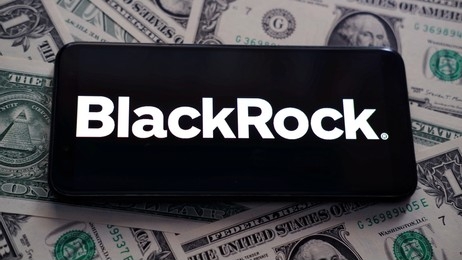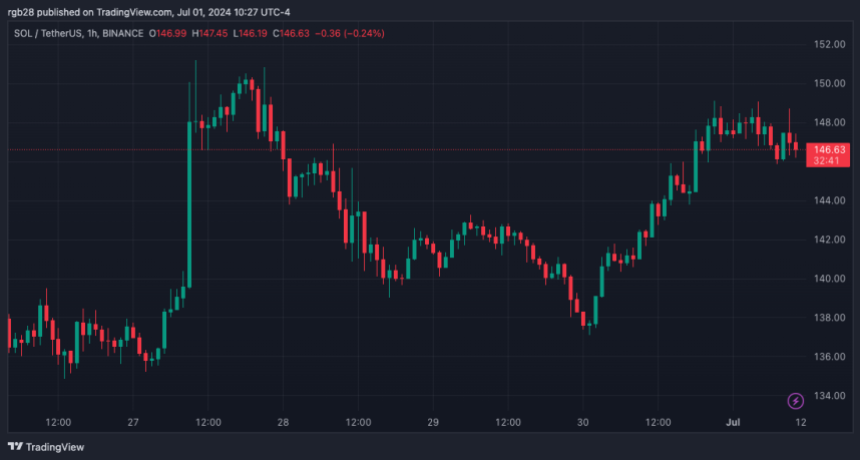Latest News
What Are the Crypto Whales Buying? How to Stay Ahead of The Curve with Margex Copy Trading | MATIC News

Disclosure: This is a sponsored post. Readers should conduct further research prior to taking any actions. Learn more ›
Experienced retail traders and long-term investors in the cryptocurrency market understand the driving force in a speculative market algorithm fueled by people and not capital. Decisions and investment plans to buy large amounts of cryptocurrency assets are carried out by individuals with top information and a better idea of the price performance of such assets.
These factors affect how many beginner traders trade, coupled with the uncertainty of price fluctuations, which can significantly affect human psychology and make it extremely difficult to execute profitable trades.
Many users have turned to robots or AI-driven technology to help execute trades. Still, the best winners in the financial market are trades driven by sentiment, and whales are accumulating either short-term or long-term.
For the above reasons, retailers and beginner traders look for better trading opportunities or strategies to optimize their trading experience and increase the profitability of their investments.
In this article, we will discuss how to discover what crypto whales are buying and leverage on Maegex copy trading to remain profitable while doing little in the cryptocurrency market.
Crypto Whales – Who Are They?
Crypto whales are individuals or institutions that accumulate many cryptocurrency tokens with good tokenomic and have the prospect of generating good profit returns within months or years.
Whales first originated from the traditional financial (TradFi) market, referring to investors and institutions that influenced the price of the market and carried out huge transactions. The same applies to the cryptocurrency market, as crypto whales accumulate large amounts of cryptocurrency tokens, influencing sentiments regarding those assets.
Although there are no criteria on the number of cryptocurrency assets to be accumulated to earn the crypto whale term, these individuals or institutions have a large amount of these assets that will move the price of these cryptocurrency assets either upward or downward price movement.
The digital age has made the need to track the portfolio of crypto whales essential, as this will greatly improve the profitability of the trader. However, tracking these portfolio assets requires time and knowledge of using high-tech applications and constantly searching for new and improved technologies to remain profitable.
Tool Used to Track Crypto Whale Movement
Crypto whales have the influence to manipulate and create a sentimental shift in cryptocurrency assets, leading to a domino effect, either to the upside or downside, depending on the sentiment surrounding the buy orders or sell orders of a particular crypto asset.
Whales possess the power to create demand or supply sentiment through their trading activity, which leads to huge potential returns for traders. Retailers explore tools to track these buy or sell activities to make informed decisions.
AI tools such as Nansen, Eherscan, Dune analytics dashboard, and others are used to track crypto whale activities and trading patterns. However, for better results, this software could require a subscription.
The Nansen AI tool above shows different data on a cryptocurrency token and the amount bought by different crypto whales within a specific period. This will help users and retailers decide to favour their profitability by tracking these so-called smart money traders or investors.

Another example of a tracking tool for big wallet token holders is the user Etherscan, which displays all transaction activities on the Ethereum network. This enables users to track different transactions performed by crypto whales and the specific token transactions they have been involved in.
Tools like Solscan and Snowtrace track tokens on the Solana and Avalanche networks. These tools help users or traders stay ahead of the market trend curve and make profitable gains.
To use these crypto whale tracking tools effectively, one needs to acquire cryptocurrency skills, understand how these tools work and combine these tools with other software to properly track these crypto whales or use a paid subscription plan for other AI tools.
All of these reasons make the Margex automated copy trading tool more effective. It takes the load off many users and traders as it enables them to build a better profitable trading journey while having enough time to focus on building a sustainable strategy and diversifying their portfolio.
Margex Automated Copy Trading Tool for All Beginners And Pro Users
Automation continues to evolve in the financial market, as many users and traders do not have the luxury of sitting in front of the charts all day waiting for setups to play out, entering a trade and suffering losses as a result of manipulation, or not entering the right trending cryptocurrency asset.
Copy trading helps eliminate the stress needed to track crypto whale wallets, with far more such guarantees for many users who have explored the use of copy trading tools. Copy trading, as the name implies, is the use of an automated strategy tool to replicate or mirror the trades of other experienced traders.
To lift the load work and help users scale better in their trading journey, Margex Exchange, a copy trading platform, has designed its platform to provide the best trading experience to all users, enabling seamless copy trading on its user interfaces.
With a robust, ultra-convenient, and user-friendly platform, users have access to top experienced traders to copy from and analyse past trading data of these traders, such as cumulative equity in position, return on equity (ROE), strategies, most traded assets, and all.
These features enable users to make the best trading decisions, choose an experienced trader to copy, and start their copy trading experience. To further improve the trading experience for its global community, Margex also included a zero-fee converter and different modes of deposit and withdrawal.
Margex zero-fee converter helps users swap different crypto assets with ease, improving their experience on the platform. Due to their low transaction fees and high speed, users can also use different means of withdrawal and deposit, such as USDT, USDC, and Kaspa.
Margex is also currently offering its high-volume users the opportunity to earn a share of up to $5 million in Hamster Kombat (HMSTR) airdrop tokens from June 24, 12:00 UTC, to July 14, 12:00 UTC, 2024.
Eligibility for a share in Hamster Kombat (HMSTR) airdrop tokens is as follows;
$100,000 – $10 in Hamster Kombat (HMSTR) tokens
$250,000 – $20 in Hamster Kombat (HMSTR) tokens
$500,000 – $30 in Hamster Kombat (HMSTR) tokens
$1M – $50 in Hamster Kombat (HMSTR) in tokens
$5M – $250 in Hamster Kombat (HMSTR) tokens
$10M – $500 in Hamster Kombat (HMSTR) tokens
$25M – $1,500 in Hamster Kombat (HMSTR) tokens
$50M – $3,000 in Hamster Kombat (HMSTR) tokens
$100M – $5,000 in Hamster Kombat (HMSTR) tokens
You can kickstart your copy trading journey with as low as $10 on the Margex platform using these simple steps below;
1 Select A Trader

Login to the Margex copy trading platform to access the copy trading dashboard. This will allow you to select a trader and strategies you wish to copy trade. All data to halp you make an informed decision about a trader is on the dashboard.
2 Click Follow

On the copy trading dashboard, users can click follow to to automate their copy trading experience. Create their strategies before deciding on an amount to deposit. Users are allowed to follow multiple experienced traders to enable portfolio diversification.
3 Allocate an amount for trading
Deposit an amount you wish to use for your copy trading strategy.
4 Confirm copy trading
Confirm the above steps to open the way to profitability in your copy trading journey.
Latest News
Bahamas to provide CBDC access via commercial banks | MATIC News

The Bahamas will provide access to its central bank digital currency (CDBC) the “Sand Dollar” through commercial banks to increase adoption, Reuters reported on July 1, citing the country’s central bank governor.
Governor of the Central Bank of The Bahamas John Rolle said the country intends to establish the regulations within two years and has started signaling its intent to banks.
Rolle said:
“We foresee a process where all of the commercial banks will eventually be in that space and they will be required to provide their clients with access to the [CBDC].”
The Central Bank of the Bahamas reportedly sees the change as critical to raising CBDC and mobile payment adoption rates, even though banks will need to significantly modify their existing IT systems to comply with the upcoming obligations.
Rolle said uptake of the Sand Dollar is still limited years after its launch in 2020, requiring a shift from incentives to enforcement.
Adoption in question
Reuters described low adoption statistics amid the news. It reported that the CBDC accounts for under 1% of the country’s currency in circulation.
Reuters said wallet top-ups fell to $12 million in the eight months before August 2023 from $49.8 million in the same period in 2022, based on central bank data.
Rolle previously described “wide use, but very low average transaction value” in an interview with The New Times on June 19. He said 120,000 mobile wallets exist, equal to 20% of retail bank accounts, but mobile wallets make up less than 1% of retail payments.
Strong short-term data
A central bank press release from February described stronger short-term data. It recognized “modest seasonal growth in digital payments activities,” including the Sand Dollar, even though lower government transfer payments impacted overall year-to-date trends.
The bank said that the person-to-business (P2B) and business-to-business (B2B) transactions reached a combined $4.5 million, mainly involving the Sand Dollars, doubling from November 2022. It said personal wallet counts rose 20% year-to-date in December 2023. Sand Dollars in circulation rose 60.8% to $1.7 million.
Bahamas’ mandatory adoption policies could precede other strategies elsewhere. Reuters noted that the European Central Bank similarly intends to require retail and banks to accept and offer any future digital euro if it proceeds with one.
Latest News
Polkadot treasury holds $245M but faces revenue decline and two-year runway | MATIC News

The Polkadot Treasury holds assets equivalent to 38 million DOT, worth approximately $245 million. Head Ambassador Tommi Enenkel, popularly known as Alice and Bob, shared a new report providing the latest update on the network’s treasury.
This balance equates to about two years of the runway at its current spending rate. The report stated:
“At the current rate of spending, the Treasury has about two years of runway left, although the volatile nature of crypto-denominated treasuries makes it hard to predict with confidence.”
Polkadot’s first six months of spending
During the first six months of this year, Polkadot invested heavily in its ecosystem, spending 11 million DOT, valued at around $87 million, across various projects.
According to the report, the network invested about $37 million in Outreach activities such as advertisements, sponsorships, and events. The network signed sponsorship deals with race car driver Conor Daly and also pushed several marketing activities designed to bolster the network’s adoption by the broader global community.
Polkadot also spent $23 million developing its network features and upgrades, including SDK, Data Services and Indexing, Governance, and Subwallets.
Moreover, the network invested $15 million in liquidity incentives and $5.5 million in Talent and Education. Additionally, it spent $3.8 million to maintain the network and core ecosystem components, and another $2.1 million went towards Research.
Revenue decline
The report highlighted a decline in Polkadot’s revenue. During the first six months of the year, the network’s total earnings dropped to 171,696 DOT from 414,291 DOT, recorded in the second half of 2023.
Enenkel attributed this decline to the significant drop in network fees, which fell from 313,443 DOT last year to 39,444 DOT in the 2024 first half:
“We see that direct revenue from fees is still marginal. Polkadot made 300k DOT from fees in 2023-H2 from a short-lived inscriptions campaign. Fees under regular conditions are pretty stable with about 20k DOT per quarter. Other sources of revenue are typically transfers from accounts that return funds that they received and pay them back for various reasons.”
Disclaimer: CryptoSlate has received a grant from the Polkadot Foundation to produce content about the Polkadot ecosystem. While the Foundation supports our coverage, we maintain full editorial independence and control over the content we publish.
Latest News
Vitalik Buterin suggests ways to speed up Ethereum transaction confirmations | MATIC News

Ethereum co-founder Vitalik Buterin has suggested ways to help the blockchain improve its transaction confirmation times.
Buterin, in a June 30 blog post, explained that Ethereum’s Gasper consensus mechanism uses a slot-and-epoch architecture that contains certain complexities, like bug interactions and a 12.8-minute confirmation time, that makes it “more and more uncomfortable” for user experiences.
So, he highlighted some of the “practical options” Ethereum has to improve its user experience further.
SSF
Buterin stated that the single-slot finality (SSF) mechanism is similar to the Tendermint consensus, as it allows the finalization of blocks as soon as they are produced.
However, unlike the Tendermint consensus, Ethereum will keep the “inactivity leak” mechanism to allow chains to remain functional even if a third of the validators go offline. Buterin added that the single-slot finality mechanism also has its faults. Notably, all Ethereum stakers must publish two messages every 12 seconds, overloading the chain.
Meanwhile, Buterin furthered that while there are ideas to mitigate this issue, users may still have to wait 5-20 seconds. He wrote:
“There are clever ideas for how to mitigate this, including the very recent Orbit SSF proposal. But even still, while this improves UX significantly by making ‘finality’ come faster, it doesn’t change the fact that users need to wait 5-20 seconds.”
Rollup preconfirmations
Rollup preconfirmations aim to improve Ethereum’s Layer 2 (L2) solutions. These solutions process transactions with the same security as the Ethereum base layer (L1) but on a larger scale.
Rollups confirm transactions much faster than the current 5-20 seconds, targeting latencies of hundreds of milliseconds. This method divides responsibilities — the L1 network remains stable, censorship-resistant, and reliable, while the L2s offer faster transaction times and address user needs directly.
To achieve faster confirmations, L2s create decentralized sequencing networks. These networks have smaller groups of validators who quickly sign off on blocks, often within milliseconds, and commit them to the blockchain.
However, validators must ensure their commitments are consistent and trustworthy. If a validator signs conflicting blocks, they risk losing their deposits.
Based preconfirmations
Based preconfirmations leverage Ethereum proposers’ advanced capabilities, driven by Maximum Extractable Value (MEV) prospects.
The concept involves establishing a standardized protocol where users can pay an extra fee for immediate assurance that their transaction will be included in the upcoming block. This service, known as preconfirmations-as-a-service, would assure users of swift transaction confirmation.
Proposers who fail to fulfill their commitment or breach the agreement face penalties (slashing). Buterin noted that this framework will apply to L1 transactions and extend to L2 solutions. By treating all L2 blocks as L1 transactions, the preconfirmation mechanism ensures accelerated confirmations throughout the Ethereum network.
Buterin noted that Ethereum implementing SSF and rollup or based preconfirmations could significantly reduce transaction confirmation times.
However, he pointed out that this would return to the initial “epoch-and-slot architecture” the blockchain was trying to ditch. He stated:
“There is a deep philosophical reason why epoch-and-slot architectures seem to be so hard to avoid: it inherently takes less time to come to approximate agreement on something, than to come to maximally-hardened ‘economic finality’ agreement on it.”
He suggested that the network developers explore other options that are not as tightly interwoven as Gasper.
Mentioned in this article
-

 Hot Projects4 months ago
Hot Projects4 months agoBitcoin Blasts Past $70,000 to Register New All-Time High | MATIC News
-

 Latest News4 months ago
Latest News4 months agoCourt upholds SEC’s unregistered securities claims against Gemini, Genesis’ Earn program | MATIC News
-

 Latest News2 months ago
Latest News2 months agoSix Coinbase customers claim the exchange is violating securities laws in new lawsuit | MATIC News
-
Hot Projects2 months ago
Bitcoin Will Be Set For New ATHs If It Breaks This Resistance: Analyst | MATIC News
-

 Hot Projects3 months ago
Hot Projects3 months agoBitcoin ETF Inflows Could Eclipse $1 Trillion, Predicts Bitwise CIO | MATIC News
-

 Hot Projects3 months ago
Hot Projects3 months agoOndo Finance Joins BlackRock Tokenized Fund As Inflows Surpass $160M | MATIC News
-

 Latest News4 months ago
Latest News4 months agoOver $1 billion wiped off HEX’s valuation following Richard Heart’s disparaging remarks | MATIC News
-

 Hot Projects2 months ago
Hot Projects2 months agoPEPE Whales Go On Massive 720B Shopping Spree Amid Campaign For New ATHs, Is It Time To Get In? | MATIC News




